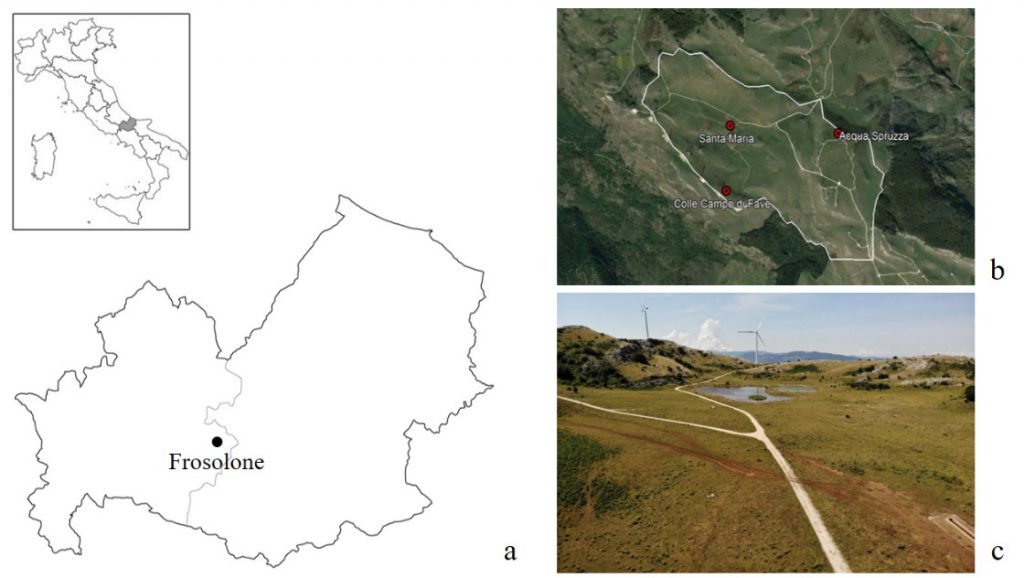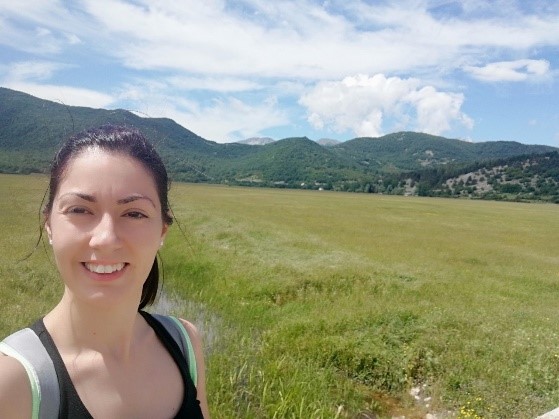Luana Circelli, Antonella Fatica
In the final text of the Convention of the United Nations on Desertification (UNCCD, 1994), Land Degradation (LD) is defined as a “reduction or loss, in arid, semi-arid and dry sub-humid areas, of the biological or economic productivity and complexity of rainfed cropland, irrigated cropland, or range, pasture, forest and woodlands resulting from land uses or from a process, or combination, of processes, including processes arising from human activities and habitation patterns”. However, as suggested by D’Odorico and Ravi (2016), desertification and LD are two terms commonly associated with losses of vegetation cover, ecosystem productivity, and soil resources; as a matter of fact, desertification means “land degradation in arid, semi-arid and dry sub-humid areas” (UNCCD, 1994).
From FAO’s data (2015), 33% of the global land area is degraded. About 47% of the globally degrading land is forest; cropland accounts for approximately 18% of the total global degraded land (Bai et al., 2008), and about 2 billion people and 1.9 billion hectares of land are affected by LD globally (Naseer and Pandey, 2018).
But what are the main causes of LD? According to WMO (2005), LD involves two interlocking complex systems: the natural ecosystem and the human social system. The causes of LD are not only biophysical but also socioeconomic (e.g. land tenure, marketing, institutional support, income, human health) and political (e.g. incentives, political stability). In the last few years, several studies (Wilson and Juntti, 2005; Montanarella, 2007; Salvati and Zitti, 2008; Ferrara et al., 2020) have highlighted how sensitivity to LD is strictly related to the quality of local/regional climate, soil characteristics, vegetation types, socio-economic systems, land management options, and quality/effectiveness of policy responses, but the conclusion is always the same: sustainable land management practices are needed to avoid LD. It means that only when climate resources are paired with potential management or development practices, can the LD potential be assessed and appropriate mitigation technology considered (WMO, 2005).
According to Lal et al. (1989), principal climatic factors of LD include erosion by water and wind, chemical degradation (comprising acidification, salinization, fertility depletion, and decrease in cation retention capacity), physical degradation (comprising crusting, compaction, hard-setting, etc.) and biological degradation (reduction in total and biomass carbon, and decline in land biodiversity).
Wind and water erosion are the most widespread form of degradation (Kumar and Das, 2014). Wind leads to the removal, and deposition, of soil particles from the topsoil surface by its action; in the arid and semi-arid areas, mostly, the risk of wind erosion is serious. On the other hand, water erosion admits various processes such as splash erosion, rill and gully erosion, and sheet erosion (Douglas, 1994); gullies, in particular, can lead to the erosion of large amounts of soil with a huge amount of rain. Rainfall, indeed, is the prime factor in determining the world’s climate and therefore the distribution of vegetation types. In cultivated lands, dryland cropping systems are generally rainfed and are typically left fallow during rainless periods, which favor a rapid degradation through soil erosion. While, in areas with limited access to fresh water, irrigated agriculture may accelerate soil salinization, which is a major hurdle for economic crop production (D’Odorico and Ravi, 2016). Along with rainfall, the temperature is the main factor determining climate and therefore the distribution of vegetation and soil formation (WMO, 2005). Seasonal and daily changes in temperature can affect the soil moisture, biological activity, rates of chemical reactions, and the types of vegetation. Important chemical reactions in the soil include the nitrogen and carbon cycles.
Nowadays, it is widely accepted that the organic matter of the soil is the first factor contributing to biological soil fertility, but organic matter is sensitive to changes in the climate, and their decomposition rate increases with increasing temperature. The majority of organic matter is lost as carbon dioxide in the atmosphere and this proves that some intensively cropped land releases a substantial amount of greenhouse gases, as suggested by Tate (1992). About this, carbon sequestration can surely be a valid tool to mitigate climate change, fighting LD. It implies transferring atmospheric CO2 into long-lived pools and storing it securely, so it is not immediately re-emitted. Thus, soil carbon sequestration means increasing soil organic and inorganic carbon stocks through judicious land use and recommended management practices. Some of these practices include mulch farming, conservation tillage, agroforestry, and diverse cropping systems, cover crops and integrated nutrient management, including the use of manure, compost, biosolids, improved grazing, and forest management (WMO, 2005).
Land Degradation in pasture areas: a case study in Molise Region, Italy
In mountainous areas of South-Central Italy, pasture represents a primary feed supply for grazing animals, but also an important reservoir of biodiversity and traditional productions. In these areas, human presence and agricultural activities play both an important role in the preservation of landscape and vegetal communities. As suggested by Costantini and Lorenzetti (2013), the driving forces of LD in these areas are represented by unfavorable climate conditions, poor soil management, improper land planning, and bad agricultural and animal husbandry management. Among these drivers, poor management of soil in weak environments (where there are at once the responsibility of both public administrators and farmers) could be the most important cause of soil degradation.
Despite rural soils of Molise Region being covered mainly by forests and permanent meadows, superficial soil erosion and landslides are really common and concern to a large part of the region (Magliulo et al., 2008). These phenomena have been intensified especially during the last decades when to maximize food production and to reduce manufacturing costs, there has been a progressive abandonment of hilly and mountainous areas in favor of flat areas, thus depriving these rural areas of the farmlands’ protection and supervision causing also biodiversity loss. Likewise, soil also plays an important role within the pasture ecosystem influencing the potential productivity and the vegetational turf characteristics from both qualitative and quantitative point of view. Despite that, even animals can stress and affect pastures in several ways (first among them: through undergrazing and/or overgrazing activities), then it seems necessary to determine the appropriate stocking rate for each pasture (known as the number of animals per unit of territory and time). This allows us to prevent forage and soil degradation, ensuring the balance between animal productions, use of resources and, environmental impacts.
To give an example is briefly reported a study carried out by Fatica et al. (2019) in grazing marginal areas of South-Central Italy, interested by the ancient transhumance practice that UNESCO included, in December 2019, in the Intangible Cultural Heritage list. The reference site is located in the Municipality of Frosolone, in Molise Region (Fig.1).

The main goal of this study was to evaluate Frosolone’s pastures situation over thirty years, contributing to the management of the meadow due to minimizing the animal, human and environmental stresses in the study area. To do this, a series of environmental parameters have been used as inputs in a spreadsheet model for the assessment of sustainable stocking rate with a nutritional approach adapted to the specific conditions of multispecies grazing animals in South-Central Italy (during years 2002-2003), according to Pulina et al. (1999) and Salimei et al. (2005).
With this model, considering the different grazing species, the best use of pasture resources was hypothesized maintaining or increasing the biodiversity of plants and animals, also to support organizational decisions at a local level. Additionally, an estimation of the arboreal, shrubby, and herbaceous forage availability, together with the knowledge of animal feeding behaviors, can contribute to enhancing the management of grassland, controlling the negative effects of under- and overgrazing, enabling the preservation of biodiversity and edaphic resources and vegetation, while improving local microeconomies. Secondly, was remarked also a relevant decrease in grazing species consistency, which has led to an impoverishment of herbaceous species due to a localized overgrazing phenomenon that caused overutilization of vegetal resources and a progressive turf quality decline, with a consequent increase of low palatability species. From this, it is possible to observe how essential it is to adopt a more rationalized management of grazing, e.g. through turn-based grazing also supported by a sustainable stocking rate simulation model as well as by agronomic practices that can protect the biological diversity of soils and landscape. Concluding, it seems obvious that appropriate pastures, animals, soils, and lands management could potentially pose a tool to ensure the sustainable development of socio-economical and ecosystem activities in Mediterranean regions and, at the same time, could represent an important reservoir of resources for territories and heritage.
References
Bai Z.G., Dent D.L., Olsson L., Schaepman M.E., 2008. Global assessment of land degradation and improvement: 1. identification by remote sensing (No. 5). ISRIC-World Soil Information.
Costantini E.A.C., Lorenzetti R., 2013. Soil degradation processes in the Italian agricultural and forest ecosystems. Italian Journal of Agronomy, 8:e28.
D’Odorico P., Ravi S., 2016. Land Degradation and Environmental Change. In: Shroder J.F. (Ed.), Biological and Environmental Hazards, Risks, and Disasters. 1st Edition, Elsevier, pp. 219-228.
Douglas A.E., 1994. Symbiotic interactions. Oxford University Press, London.
FAO, 2015. Status of the World’s Soil Resources – Main Report. Food and Agriculture Organization of the United Nations and Intergovernmental Technical Panel on Soils, Rome, Italy.
Fatica A., Circelli L., Di Iorio E., Colombo C., Crawford T.W., Salimei E., 2019. Stresses in Pasture Areas in South-Central Apennines, Italy, and Evolution at Landscape Level. In: Pessarakli M. (Ed), Handbook of Plant and Crop Stress, Fourth Edition, pp. 271-291.
Ferrara A., Kosmas C., Salvati L., Padula A., Mancino G., Nolè A., 2020. Updating the MEDALUS-ESA Framework for Worldwide Land Degradation and Desertification Assessment. Land Degradation & Development, 1-15.
Kumar R., Das A.J., 2014. Climate Change and its Impact on Land Degradation: Imperative Need to Focus. Journal of Climatology & Weather Forecasting, 2:108.
Lal R., Hall G.F., Miller F.P., 1989. Soil Degradation: I. Basic Processes. Land Degradation & Rehabilitation, 1:51-69.
Magliulo P., Di Lisio A., Russo F., Zelano A., 2008. Geomorphology and landslide susceptibility assessment using GIS and bivariate statistics: a case study in southern Italy. Natural Hazards, 47(3):411-435.
Montanarella L., 2007. Trends in land degradation in Europe. In: Sivakumar M.V., N’diangui N. (Eds), Climate and Land Degradation. Berlin: Springer. ISBN 978-3-642-09150-6, pp. 83–104.
Naseer A., Pandey P., 2018. Assessment and monitoring of land degradation using geospatial technology in Bathinda district, Punjab, India. Solid Earth, 9(1): 75.
Pulina G., Salimei E., Masala G., Sikosana J.L.N., 1999. A spreadsheet model for the assessment of sustainable stocking rate in semi-arid and sub-humid regions of Southern Africa. Livestock Production Science, 61:287-299.
Salimei E., Costantini M., Miraglia N., Polidori M., Pilla F., 2005. Aree pascolive in Molise: gestione del carico animale quale mezzo di difesa idrogeologica e di valorizzazione delle risorse del territorio. X Convegno Interdisciplinare ISAPA/ISPALEM, Udine (UD) 3-4 Novembre.
Salvati L., Zitti M., 2008. Regional convergence of environmental variables: Empirical evidences from land degradation. Ecological Economics, 68:162–168.
Tate K.R., 1992. Assessment, based on a climosequence of soils in tussock grasslands, of soil carbon storage and release in response to global warming. Journal of Soil Science, 43:697-707.
UNCCD, 1994. United Nations Convention to Combat Desertification, Elaboration of an International Convention to Combat Desertification in Countries Experiencing Serious Drought And/or Desertification, Particularly in Africa (U.N. Doc. A/AC.241/27, 33 I.L.M. 1328, United Nations).
Wilson G., Juntti M., 2005. Unravelling Desertification: Policies and Actor Networks in Southern Europe. Wageningen, Holland: Wageningen Academic Publishers 978-90-76998-42-8.
WMO, 2005. Climate and land degradation. World Meteorological Organization, WMO-n°989, ISBN 92-63-10989-3.
Authors: Luana Circelli, Italy

Luana Circelli is currently a PhD student in Agricultural Technologies and Biotechnologies at the University of Molise, where she graduated in Agricultural Sciences and Technologies. Her research project, in the scientific area of pedology, concerns the application of Spectroscopic techniques for soil analysis, focused in particular on the dynamics of the organic carbon in the studied soils. She attended several International Summer Schools (China, Croatia and Italy) as part of the IUCLAND project, and she was visiting research scholar at the Brooklyn College of CUNY in New York City, where she worked on a research project investigating the potential pollution from microplastics in biosolids, used in the urban green environment.

Antonella, graduated in Agricultural Science and Technology at the University of Molise with a thesis in Animal Nutrition, since 2017 is attending the Doctoral Course in Agriculture Technology and Biotechnology at the same university. On this regard, it has focused its research activities to learn more about on sustainable feed management for animals, focusing mainly in the marginal areas of the Molise region. Among other things, she is studying pasture areas of Molise both to investigate and manage properly the vegetal productions for animals, but also, to try to safeguard landscape, soils, and the main characteristics of the territories. She also attended some summer and winter schools in Italy, Kirghizstan and China within the project: International University Cooperation on Land Protection in European-Asiatic Countries (IUCLAND), dedicated to the topic of Land Degradation which allowed the interaction among European, Far East Asian and Central Asian partners.
